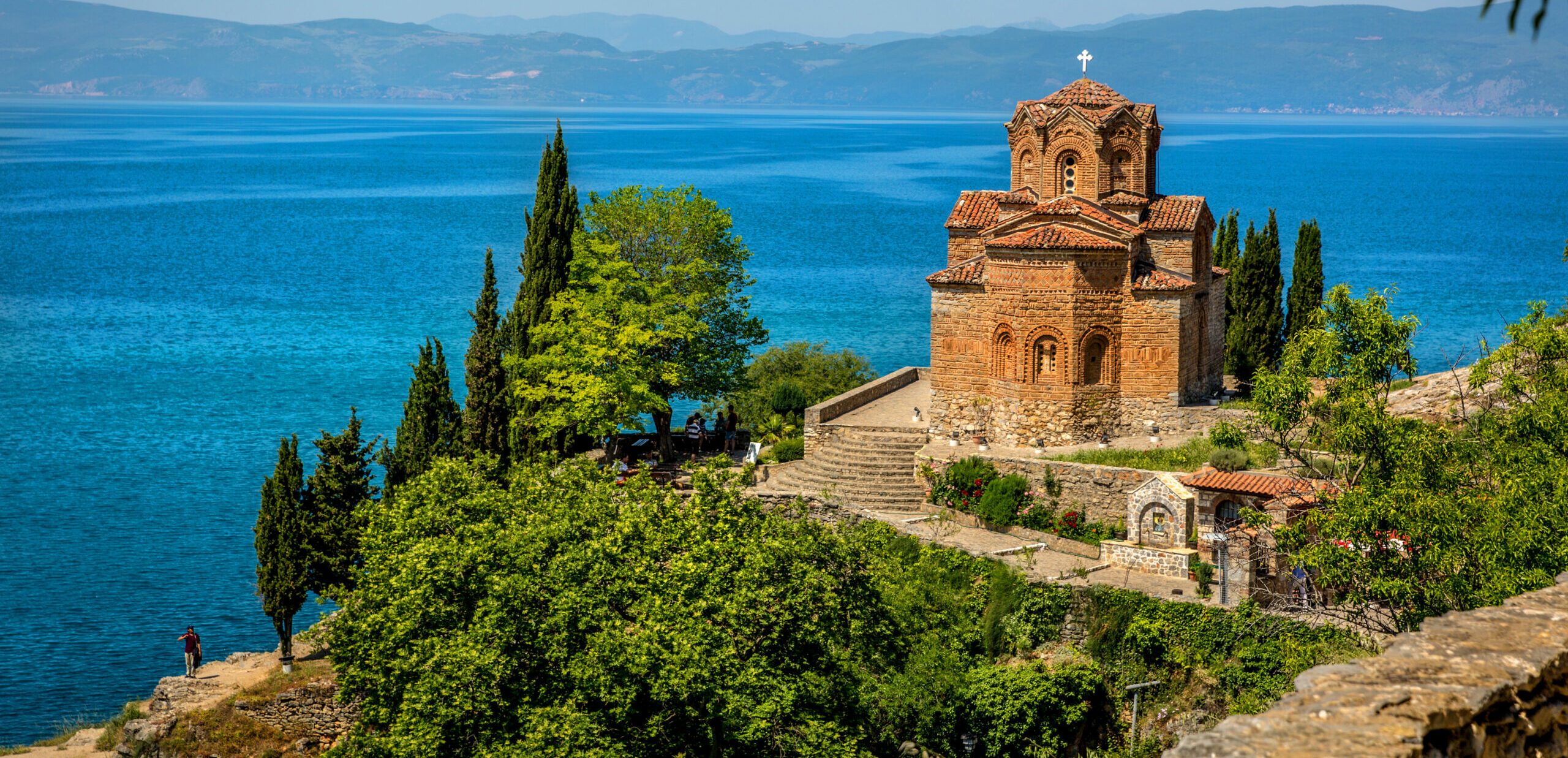The pearl of Macedonia, the city of Ohrid is the largest city on Lake Ohrid and the eighth largest city in the country. Ohrid is known for once having 365 churches, one for each day of the year, and has been called the “Jerusalem of the Balkans”. The city is rich in picturesque houses and monuments and tourism is prevalent. In 1979 and 1980 respectively, Ohrid and Lake Ohrid were declared a UNESCO World Cultural and Natural Heritage Site. Ohrid is one of only 28 sites on the UNESCO World Heritage List that are both cultural and natural sites. Ohrid is also known as the “City of Light”, which is a literal translation of its ancient name Lychnid. The movement of tourists is known in advance. It starts at the square, then you walk along the historic Tsar Samuel Street, past the museums, the House of Robevi, the Church of St. Sophia from the 11th century, the ancient theater, the Upper Gate, the Icon Gallery, the Church of the Holy Mother of God – Perivlepta, Samuel’s Fortresses, Plaoshnik with the restored Church of St. Clement, dedicated to St. Panteleimon, and finally the Church of St. John the Theologian, near the village of Kaneo. Ohrid is not only made up of these monuments. For about 100 years, the relics of St. Clement were kept in the small chapel dedicated to the saint. The church was built in the 15th century and it is believed that one of the reasons was to preserve the relics of St. Clement. Other attractions are, of course, the springs of the river Drim and the monastery of St. Naum in the immediate vicinity. Ohrid experienced a new heyday in the 9th century with the arrival of the disciples of the first teachers of all Slavs – the brothers Cyril and Methodius from Thessaloniki. With Clement (886 AD) and Naum (900 AD), the great era of Slavic revival and the creation of a new cultural hearth in Ohrid began – it was the golden age of Slavic culture and literacy. Clement of Ohrid worked here for thirty years – in the monastery dedicated to St. Panteleimon, he founded the first Slavic literary school, also known as the First Slavic University, which was attended by over 3,500 students. Clemens is also the first original writer in the Slavic language. He wrote several works, including the “Praise to Cyril”, a masterpiece of medieval Slavic literature. He died in 916 and was buried in the tomb he had prepared for himself in the monastery church of St. Panteleimon. The numerous deeds he accomplished among the people of Ohrid during his life are deeply engraved in the consciousness of the inhabitants, so that they venerate him to this day as their patron saint and protector. And Naum, at the other end of the lake, built a church (900) dedicated to the holy archangels Gabriel and Michael, who were regarded as healers. Today, the people of Ohrid venerate Naum as a miracle worker and attribute to him the ability to exorcize demons from the human soul, regardless of faith. The graves of both saints in the Plaoshnik Monastery and in the St. Naum Monastery are regularly visited today, in the deep conviction that they possess healing powers. To understand the spirit of the city and get into the essence of local life, you should visit the old city center called Varosh, which stretches over two hills overlooking the azure expanse of the lake.





